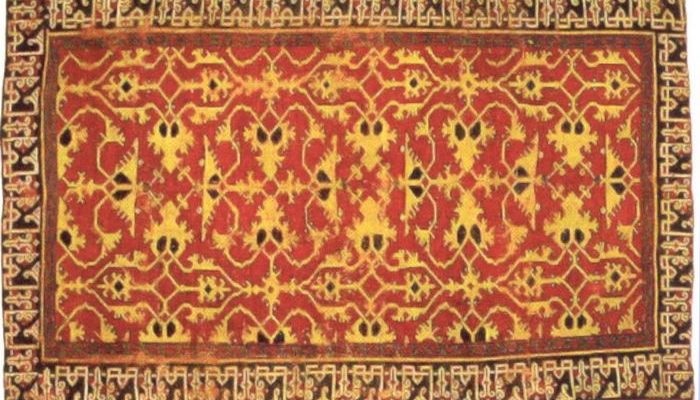Step back in time with us as we unveil the secrets woven into the very fabric of the Anatolian rug, a piece of craftsmanship, the symbolism of which whispers ancient tales. Woven by skilled hands, these Turkish carpets are far more than a simple decor item. They’re interwoven with meaning, history, and the essence of a culture that has thrived for centuries in the heartland of Turkey, an area known as Anatolia.
In a world where mass production is king, the Anatolian rugs stand defiant. Each carpet is a testament to the artisans who pour their hearts into creating the best carpets in the world. You see, these aren’t just any carpets. They are intricate works of art steeped in cultural narratives and spiritual beliefs, setting them apart from the rest.
Perhaps you’ve heard of Anatolian rugs but never delved deeper into their intricate world. These expensive carpets are highly prized, with collectors worldwide vying to add them to their collection. But why do they command such attention? Well, it all boils down to their unique designs and motifs, deeply symbolic, each telling a story, a snapshot of Anatolian life.
At the heart of each of these Turkish rugs lies an assortment of motifs, from arrows to dragons and even scorpions. Each motif is symbolic, a hidden language that communicates age-old Anatolian traditions and beliefs. These motifs provide an intriguing window into the lives and minds of the Anatolian people. It’s like having a time machine at your feet, offering a glimpse into a bygone era with each intricate pattern you see.
Check out 10 most common anatolian rug motifs and their meanings…
10 – The Arrow Motif
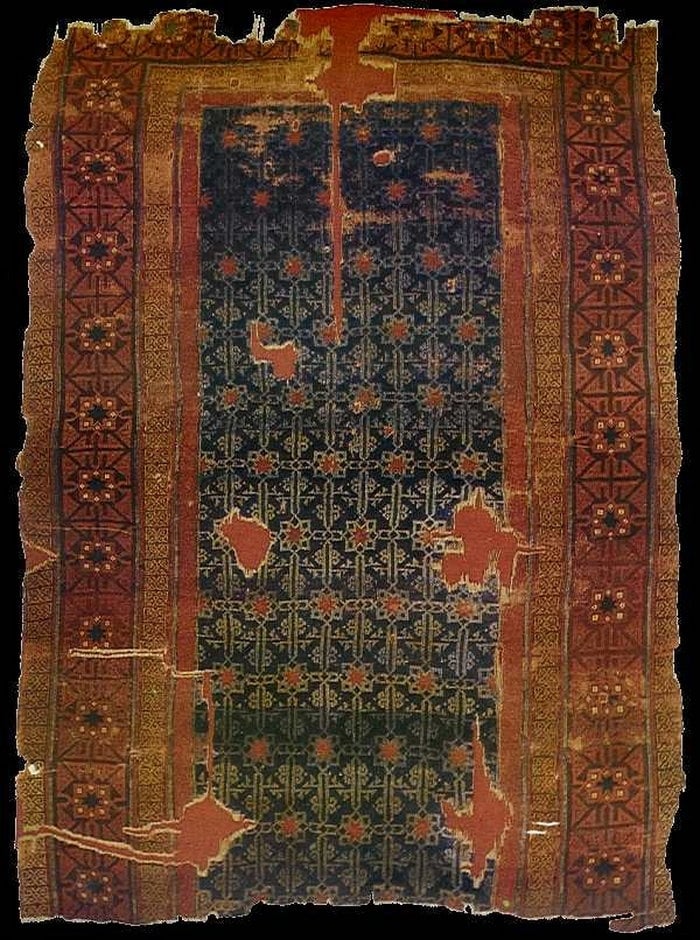
Simplicity, you’d think, is the key with the arrow motif, but delve a bit deeper, and you’re met with a wealth of symbolism that only enhances the allure of these Anatolian rugs. Traditionally, the arrow is viewed as a symbol of strength and protection. When woven into these Turkish carpets, it creates a powerful statement of safeguarding and resilience.
Picture an arrow in flight, swift and precise, its aim true. This is the spirit captured within the arrow motif, a representation of purpose, direction, and the determination to forge ahead no matter the odds. It’s a reminder that life, like an arrow, only moves forward, never back.
You might also see the arrow motif as symbolizing masculinity and the bravery of a hunter. A nod to the ancient Anatolian men who braved the wild to provide for their communities. So, in essence, an Anatolian rug with an arrow motif is a testament to bravery, perseverance, and the unwavering spirit of the Anatolian people.
09 – The Dragon Motif
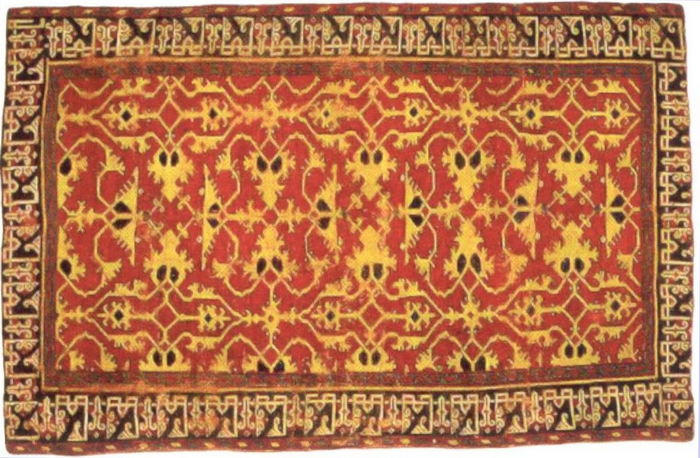
Contrary to its depiction in many cultures, the dragon motif in Anatolian rugs isn’t one to incite fear. Instead, it is respected, viewed as a symbol of wisdom, strength, and protection. The dragon, with its fierce, fiery nature, encapsulates the spirit of resilience and the ability to overcome adversity, traits valued in the Anatolian culture.
The dragon motif is not just about raw power. It’s about the balance of power and wisdom, the ability to be fierce when necessary but also wise in one’s actions. A Turkish carpet bearing this motif is a reminder to embrace the full spectrum of our personal strength while also exercising wisdom in our actions.
Moreover, dragons are often linked to the elements, mainly water and fire, in Anatolian mythology. They are seen as guardians of these crucial resources, further solidifying their role as protectors. Hence, a dragon motif brings with it a sense of safety and guardianship.
08 – The Cross Motif
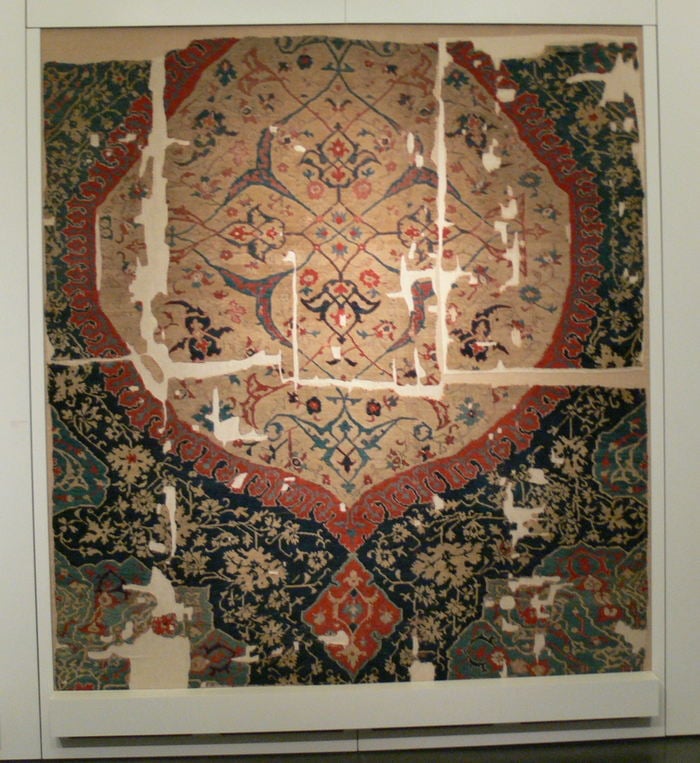
The cross motif is one that resonates with a deep sense of spirituality within the Anatolian rugs. This motif is symbolic of faith and devotion, with its roots steeped in ancient religious beliefs. However, this shouldn’t be mistaken as being strictly Christian. Instead, it symbolizes the intersection of the spiritual and earthly realms.
In a more abstract sense, the cross also represents the concept of balance. The four arms are seen as a symbol of harmony between opposing elements, much like the Anatolian belief in maintaining equilibrium in life.
Furthermore, the cross motif also signifies the cycle of life and death, a universal theme that transcends cultures. An Anatolian rug adorned with a cross motif is thus not just a piece of decor, but a profound statement on life, spirituality, and the balance between the two.
07 – The Scorpion Motif
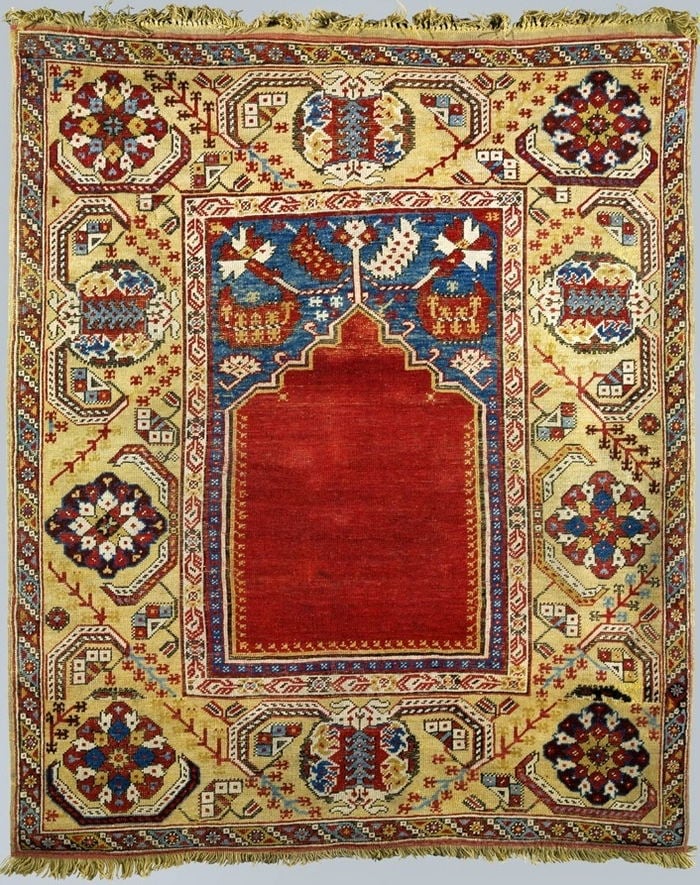
A crawling critter on your Anatolian rug? Yup, that’s right, and it’s all in the name of symbolism. The scorpion motif is a prime example of taking something that’s initially seen as menacing and reframing it as a symbol of protection. In many cultures, the scorpion, with its formidable sting, is a sign of defiance against harm.
These Turkish carpets carry the scorpion motif as an ancient amulet against evil spirits. It’s like having your very own bouncer, only this one’s expertly woven into a beautiful pattern. The scorpion also symbolizes strength and resilience, showing that just like this tenacious critter, we too can brave the challenges that come our way.
In a broader sense, the scorpion represents transformation and the ability to adapt. Just like a scorpion sheds its old skin, we too can cast aside what no longer serves us and embrace change. So, in essence, a scorpion motif stands for protection, transformation, and resilience.
06 – The Snake Motif
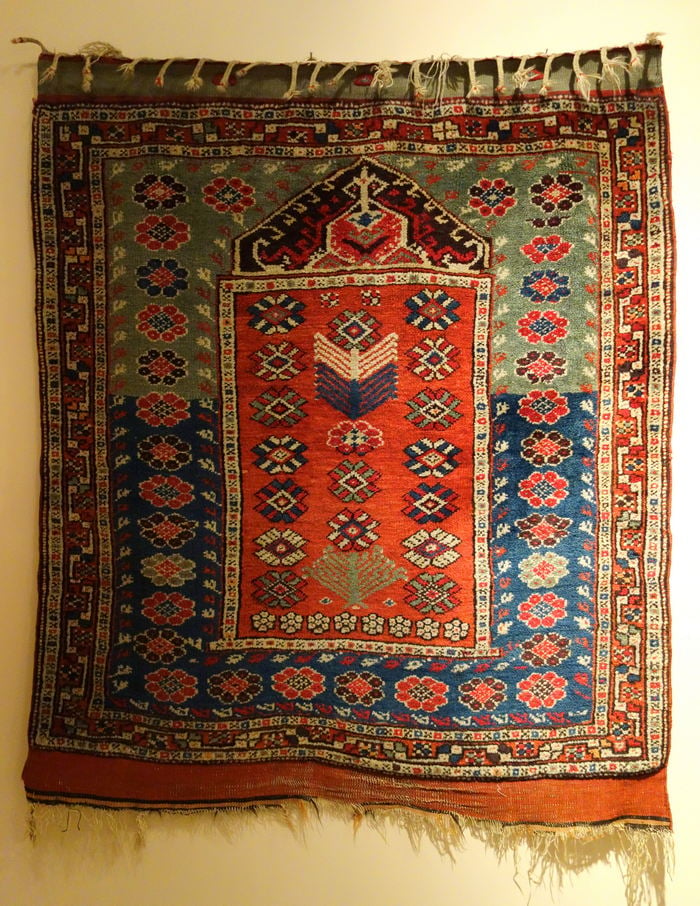
Ah, the snake, a creature that’s often met with mixed feelings. But within the realm of Anatolian rugs, the snake motif signifies a rich tapestry of positive meanings. Often, the snake is seen as a symbol of life force, regeneration, and eternity, primarily due to its shedding skin. It represents the cycle of life, renewal, and the potential for transformation.
It’s also worth noting that in Anatolian mythology, snakes are considered protectors of the home. A Turkish carpet with a snake motif is a potent symbol of safeguarding, offering divine protection to its owner.
Additionally, the snake is seen as a guardian of sacred spaces and wisdom. So, an Anatolian rug adorned with a snake isn’t just a stunning piece of art but a potent symbol of wisdom, protection, and transformation.
05 – The Chest Motif
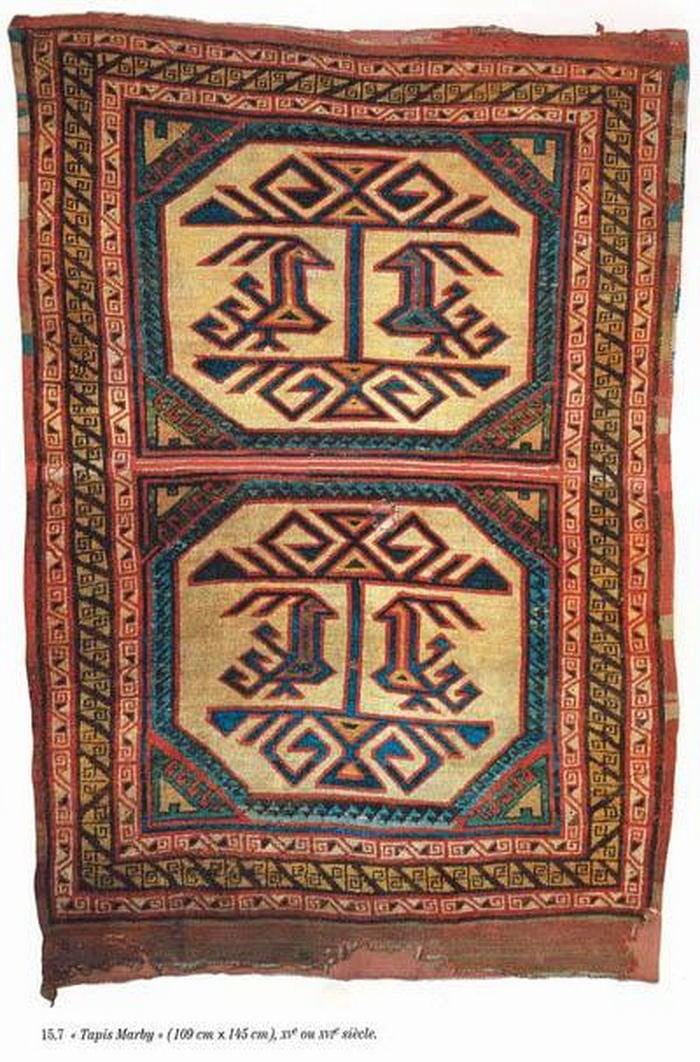
A chest motif in an Anatolian rug may seem oddly specific. But it bears a symbolism that’s tied deeply to the Turkish culture. Chests in Anatolia were often used as dowry chests, filled with textiles and goods a bride would take to her new home. Thus, the chest motif is viewed as a symbol of marital happiness and abundance.
This motif is a celebration of new beginnings, love, and the prospect of a prosperous life ahead. And it doesn’t stop there; the chest also signifies a safe space to store valuable possessions and memories, a symbol of security and preservation.
Moreover, a chest also symbolizes the heart and the wealth of emotions it holds. So, when you spot a chest motif on a Turkish carpet, know that it’s more than a simple pattern; it’s a representation of love, prosperity, security, and the richness of human emotion.
04 – The Horn Motif
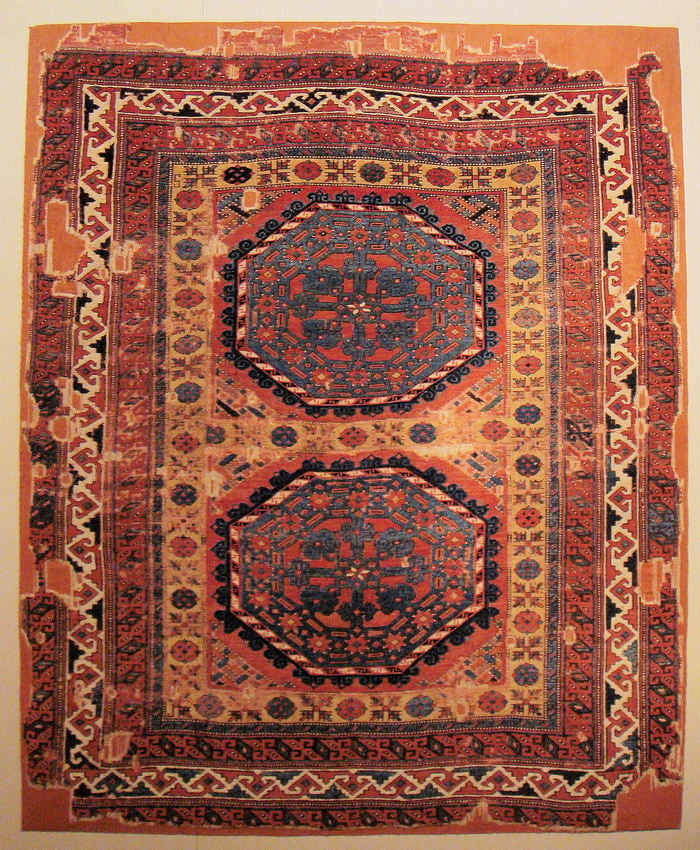
From ancient times, horns have been synonymous with power and strength, and this symbolism extends to the realm of Anatolian rugs too. The horn motif, when woven into the tapestry of these expensive carpets, signifies authority, power, and resilience.
The horn motif represents the bravery and courage of warriors in battle, drawing from the strength and ferocity of horned animals. Additionally, it is also a nod to fertility and abundance, considering that many horned creatures, like the bull, are also symbols of prosperity and growth.
Yet, it’s not all about the literal meaning. On a more metaphorical note, a horn stands for determination and the will to overcome hurdles, much like a bull charging against all odds. So, the next time you spot a horn motif on a Turkish carpet, remember it’s a symbol of courage, strength, fertility, and tenacity.
03 – The Spike Motif
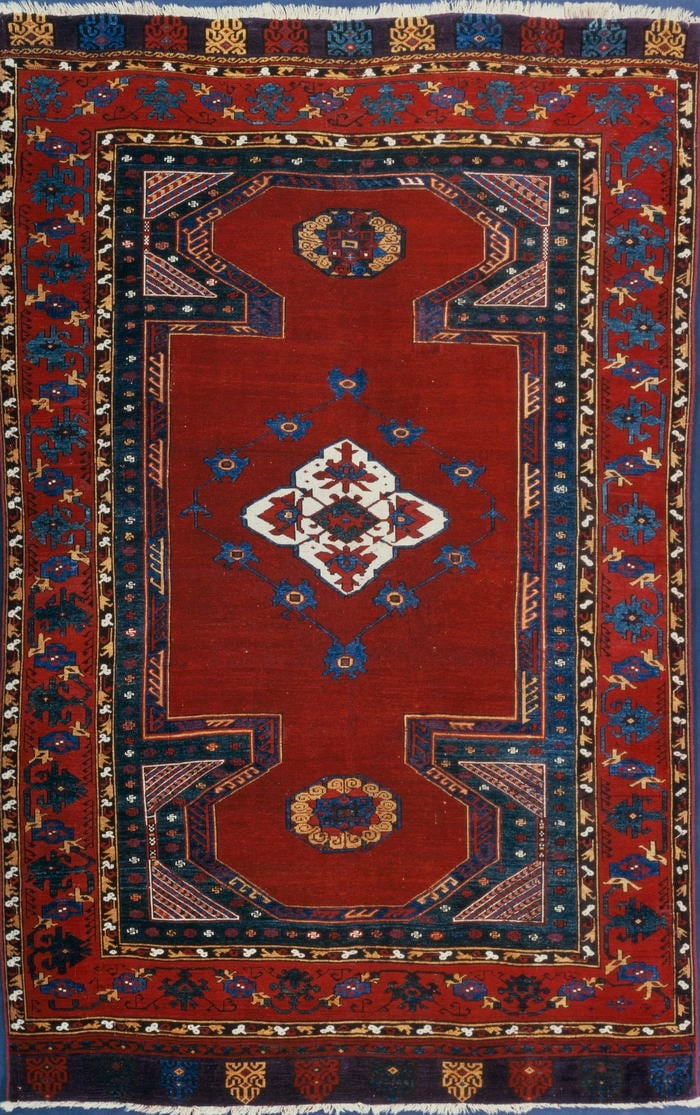
Every pattern tells a story, and the spike motif in an Anatolian rug is no exception. This particular pattern, characterized by pointy and jagged designs, symbolizes protection and warding off evil.
The spike motif, akin to thorns on a rose bush, is believed to offer protection against negativity and evil spirits. It’s a way of safeguarding one’s space, an ancient method of creating a barrier against unseen forces. So, don’t be fooled by its sharp exterior; it’s just a way of ensuring that you’re kept safe and secure.
On another level, the spike motif symbolizes strength and resilience. Just like thorns protect a flower, this motif reminds us to guard our well-being and stand strong in the face of adversity. In essence, an Anatolian rug with a spike motif is a beautiful blend of aesthetics and spiritual protection.
02 – The Fetter Motif
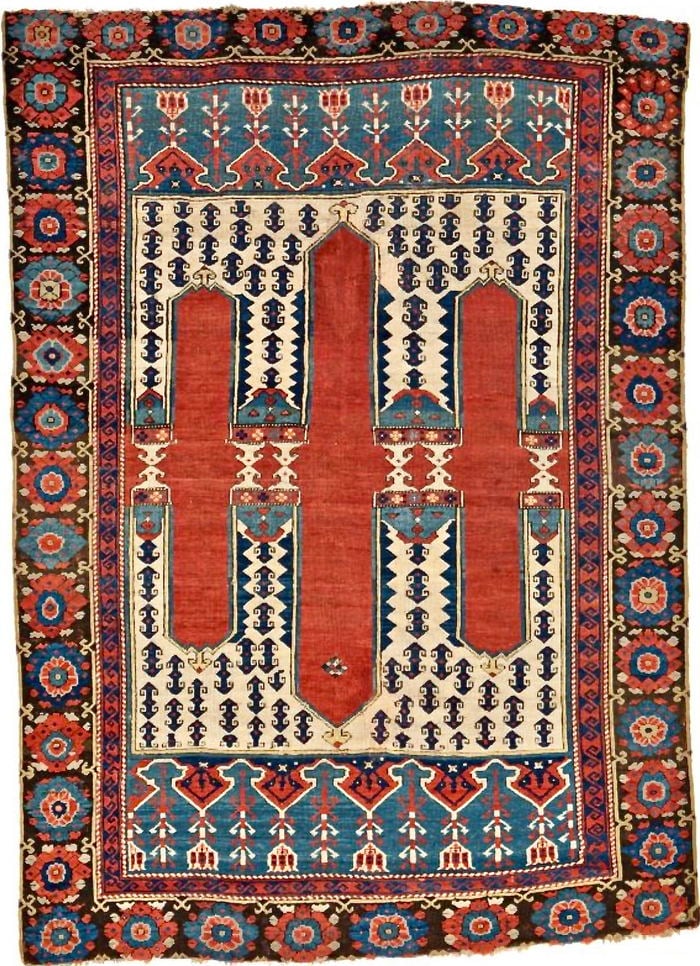
When it comes to Anatolian rugs, it’s all about reading between the lines, or in this case, the patterns. The fetter motif found on these Turkish carpets may seem unusual at first. Nevertheless,
it holds a deep symbolism tied to unity and relationship bonds.
A fetter, being a device used for binding, symbolizes the strong ties that bind us to our loved ones. It’s a beautiful representation of the familial and social bonds that hold societies together, making it a symbol of unity, connection, and interdependence.
Also, in the context of a couple, the fetter motif can represent the vows and commitments made in a relationship, signifying eternal loyalty and love. Thus, an Anatolian rug sporting a fetter motif is not just an artistic marvel, but a touching symbol of unity, love, and the bonds that connect us.
01 – The Earring Motif
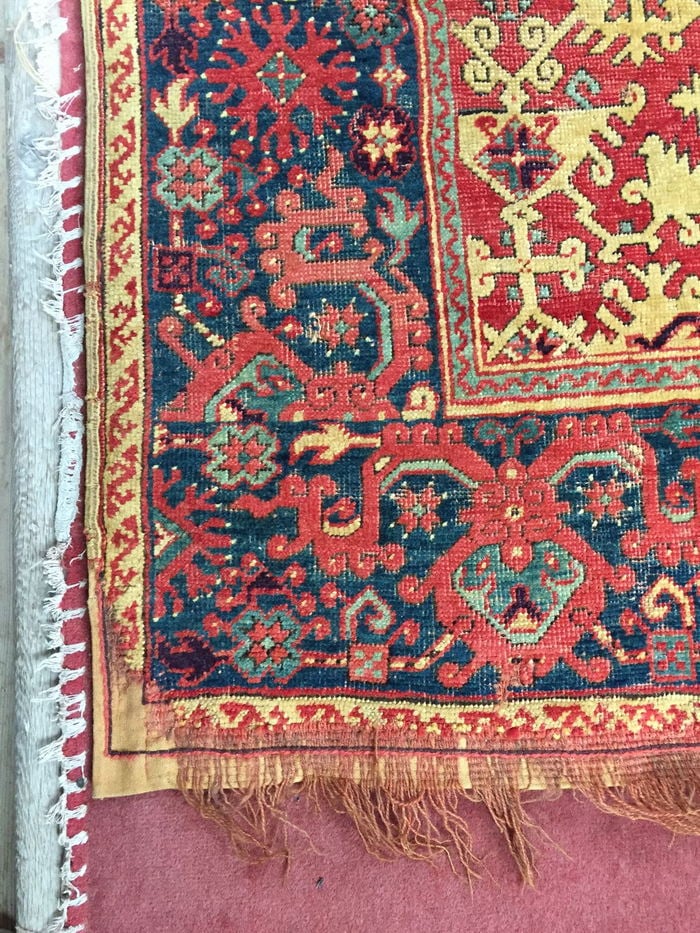
Now, let’s talk about the earring motif. It’s a little different, a little quirky, but it’s one of the most intriguing elements in Anatolian rug designs. The earring motif, just like a piece of jewelry, brings a touch of sparkle and elegance to these expensive carpets.
Symbolically, earrings are associated with beauty, adornment, and status. In ancient societies, jewelry such as earrings signified wealth, prestige, and class. Thus, an earring motif in an Anatolian rug signifies opulence and a sense of class.
But beyond surface level meanings, earrings are also considered symbols of protection against the evil eye. So, an Anatolian rug with an earring motif is not just about aesthetic appeal or status. It’s also about spiritual protection and warding off negative energy.
What are Anatolian rugs made of?
And there we have it, ten incredible motifs and their fascinating meanings woven into the fabric of Anatolian rugs, making them among the best carpets in the world. But, these symbolic patterns are just one aspect of their allure.
If we dig deeper, the very material of these Turkish carpets holds a significance of its own. Primarily woven from wool, silk, or cotton, each fiber contributes to the overall durability and aesthetic of these masterpieces.
Wool, obtained from the region’s sheep, brings warmth, resilience, and a unique softness to these expensive carpets. Silk, on the other hand, adds a luxurious sheen and refinement, taking them from beautiful to breathtaking. And cotton? It ensures that these best carpets in the world are sturdy and long-lasting.
At the end of the day, every Anatolian rug is a beautiful blend of rich materials, age-old craftsmanship and motifs. Each anatolian rug is telling a unique story. So, the next time you see one, remember! You’re not just looking at a Turkish carpet, but a captivating tale woven in colorful threads and symbolic motifs.


